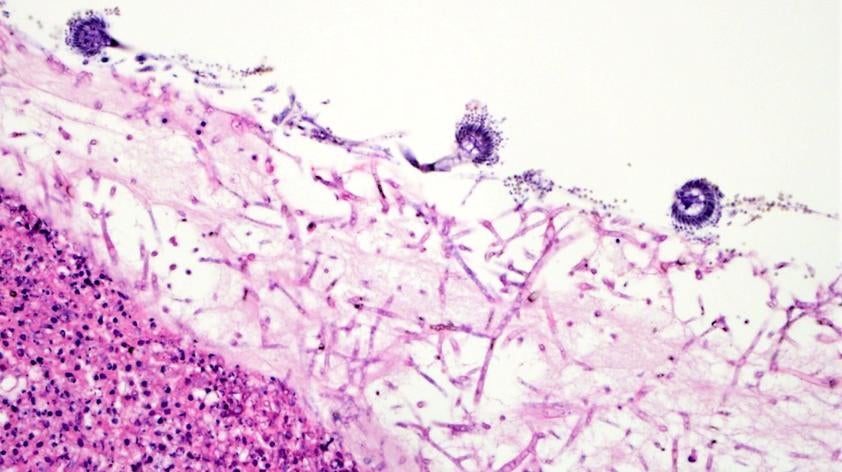
Environmental pathogens: A fungus among us
Our wildlife care specialists and veterinarians at the Zoo and Safari Park do a great job watching out for potential hazards to the animals for which they care. But what about when those hazards can’t easily be seen? It may seem today like infectious agents are everywhere, but most of the time they really aren’t just lurking in the air and dirt to get you.
Unless you are a bird that is, in which case you would unfortunately be more susceptible to a common environmental pathogen – Aspergillus.
Aspergillus (colloquially known as ‘asper’ here in the lab) is a filamentous fungus that is part of a group of naturally occurring molds that live in soil and decaying vegetation year-round. It thrives in warm, moist environments, which is, unfortunately, exactly like the conditions inside of a body!
Generally, the body’s immune system can handle fighting off the small amounts of the spores that are in the environment. However, if an animal is immuno-compromised, the environment allows for a large amount to grow, or a particular species is more susceptible, a fungal infection known as aspergillosis can develop quickly. Most commonly, we see these infections in birds, which may be more susceptible to these infections due to various anatomic, immunologic, or environmental factors.
From the pathology side, while these infections are common, they can be rather spectacular on necropsy. The fungus usually makes its home in two areas.
The first is the respiratory system. The spores enter the air sacs, causing irritation and thickening. Then, the hyphae and fruiting bodies of the fungus grow within the air sacs and lungs. In the necropsy lab, this looks like a carpet of white and green fuzzy mold coating the inner surface of the air sacs or firm white and green masses in the lungs (and I can tell you mold is not what you want to see on the inside of anything, other than perhaps a good blue cheese).
This kind of respiratory infection can be even more insidious on occasion, though, forming plugs or plaques within the trachea or its branches that can more acutely obstruct the airway of affected birds. [Figures 1 & 2]
The second area the fungus sometimes makes its home is within the circulatory system, specifically the greater vessels of the heart. With this kind of infection, we can sometimes have a pretty good idea of a diagnosis before even getting the body cavity open during necropsy (yes, we are just that good). What we may see is that one of the pectoral muscles is very pale or discolored, which tells us that there is a problem with blood flow to that muscle. In these cases, the fungus has made its way through the walls of the surrounding air sac and invaded the arteries coming from the heart.
When these lesions get big enough, they can occlude or rupture the vessel, restricting blood flow to the wing and pectoral muscles or causing severe internal bleeding. [Figures 3 & 4]
What does this information get us? Well, in Disease Investigations we can track which species are more likely to be susceptible and which may need preventative treatments or help identify what factors may lead to a higher risk of infection. These environmental pathogens can be sneaky, but we’ve got our eye on them!













